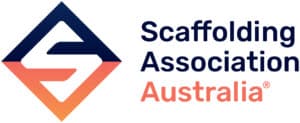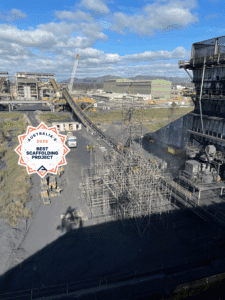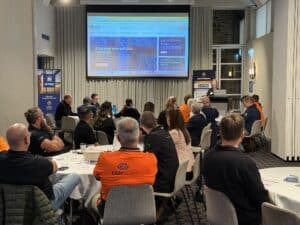Legal risks for scaffolders in 2025: key themes from today's industry webinar

The Scaffolding Association Australia hosted a legal briefing today with our partners at DWF Australia, focused on the changing legal environment for scaffold businesses and contractors in 2025.
While scaffolding has always carried risk, the session highlighted that legal exposure is widening — and expectations on businesses, directors and site supervisors continue to increase across contracts, workplace safety and incident management.
Evolving legal landscape
The presenters highlighted that while many risks are familiar — such as falls, material movement, and site control — the compliance environment has become more complex. Regulators are now more proactive, court decisions are shaping new obligations, and labour models in construction are shifting.
Scaffold businesses are seeing:
- Greater scrutiny on how risk is allocated in contracts
- A rise in claims linked to scaffold tampering and unauthorised alterations
- Increased labour hire use — and with it, new liability considerations
- Stronger enforcement activity from safety regulators
- An expectation that directors show active due-diligence, not passive oversight
The big message: legal responsibility can’t be delegated away without proper structure, documentation and oversight.
Contract and business risk
Contract terms continue to be one of the biggest risk drivers for scaffold companies. The session explained why clarity around scope, time allowances, variations, and indemnities is critical — and how unfair contract terms laws may assist some businesses.
A recurring theme was the importance of making sure subcontract terms reflect head contract obligations, so risk isn’t unintentionally retained.
Safety and compliance trends
Regulators across Australia continue to prioritise falls from height and high-risk construction work. The session highlighted the importance of:
- Strong induction and SWMS processes
- Evidence of training and competency
- Regular inspections and documented sign-offs
- Site-specific safety controls
- Early and proactive incident reporting
Scaffold tampering was identified as an ongoing and significant challenge for the industry, reinforcing the need for strong tagging systems, communication with builders, and photo records at handover.
Incident response expectations
The briefing also touched on what happens after a serious incident — including notification duties, site preservation, dealing with inspectors and protecting your legal position.
Early specialist advice is a key factor in managing risk and responding correctly if regulators attend site.
Why this matters
As the industry continues to grow and projects scale up, legal and commercial risks are rising. The session reinforced that scaffolding companies can reduce exposure through:
- Clear contracts and documented scope
- Solid safety systems and training
- Strong incident and inspection records
- Early engagement with legal advisers when issues arise
Professional legal guidance is increasingly becoming part of operating responsibly in scaffolding — not just something used when things go wrong.
Member access
This webinar was exclusive to Scaffolding Association Australia members, and the full recording is now available in the Members Portal.
If you’d like access to industry briefings, legal guidance and member-only resources designed for scaffolding businesses, visit our page to learn more about membership.




